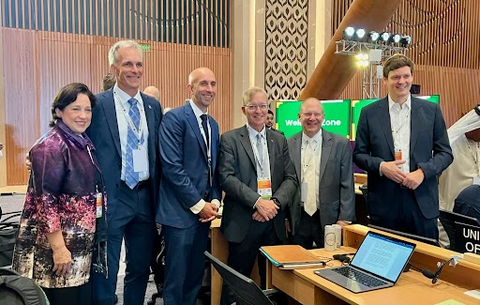The historic Moravian Church Settlements of Bethlehem, Pennsylvania/USA; Gracehill, Northern Ireland/UK; and Herrnhut, Germany now join Christiansfeld, Denmark (already inscribed in 2015) as a single World Heritage site that represents the outstanding universal value of these historic settlements and the worldwide influence of the Moravian Church.
“We would like to express our appreciation to our respective governments of the United States, Denmark, Germany, and Northern Ireland/UK for their efforts on behalf of Moravian Church Settlements,” said Mayor Reynolds.
More information can be found on moravianchurchsettlements.org, launching today.
Moravian Church Settlements is a transnational extension of Christiansfeld, a Moravian Church Settlement in Denmark founded in 1773 and inscribed on the World Heritage List in 2015. The Moravian Church is a Protestant denomination in the free church tradition centered in Herrnhut, Saxony, Germany. The extension includes three additional component parts:
Bethlehem (USA) was established in the Commonwealth of Pennsylvania in 1741. This highlights the early transatlantic dimension of the Moravian Church phenomenon during a prolific settlement-building decade and added the cultural dimension of the Moravians’ outreach to Native Americans.
Gracehill (UK) was founded in Northern Ireland in 1759. It represents the significance of the Moravian Church in the UK and exemplifies a unique series of ‘ideal’ urban plans that demonstrate a notable gender axis. This is showcased by the division of the town plan into a sisters’ side and a brothers’ side, which directly reflects the fundamental functional structure of Moravian society.
Herrnhut (Germany) is considered the ‘mother’ or ‘founding town’ of the Renewed Moravian Church. It was established in 1722 in Saxony and evolved in line with the development of Moravian theology and societal ideals. This town defined the principles of all Moravian Church settlements.





